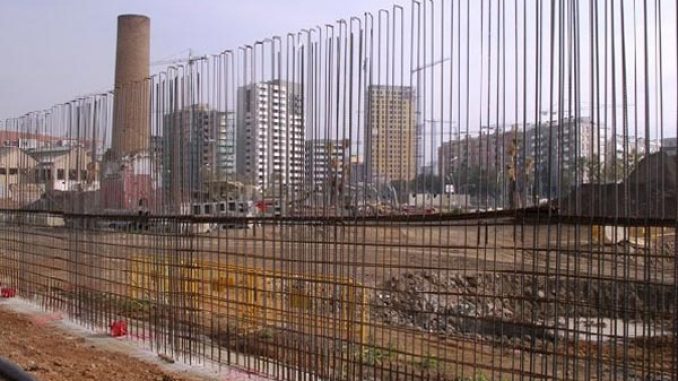
As writes José Mansilla, our colleague in OACU, in observing how an ancient industrial neighborhood like Poblenou (Barcelona) was surrendering to the neoliberal urbanism that decided it should become a district of technology and tourism, he used to think at José María González Sinde‘s movie Viva la clase media, “Long life to the middle classe” (1980). It tells the stories, the adventures and contradictions of a group of middle-class members of the Communist Party in the Sixties: and this is because in focusing on the rising, the growth and evolution of the middle class – and especially the leftist middle class that took charge of the City Council – we understand how the so-called “progressive” urbanism in Barcelona took this turn to real estate speculation and privatizations (as we have also seen regarding Bon Pastor). It is not surprising, though, that the daughter of the director of the movie is the minister Ángeles González Sinde, the author of a tremendously unpopular Law in defense of intellectual property rights. The big question is: will this process continue, or will we have the chance to see some change?
- José A. MANSILLA, “The triumph of the middle classes: dialectic between social change and urbanism in Poblenou“, Revista de Antropología Experimental, n.15, 2015.
- In this previously unpublished article, “Gentrificación: un concepto inadecuado, una temática ambigua” (2015), French urban planner Jean-Pierre GARNIER argues that the concept of gentrification, that as is known refers to the gentry, is inadequate to describe the expulsion in contemporary cities. Published bu Perifèries Urbanes, other excerpts here.
- Some readings about the bourgeoisie in Barcelona: Pere Culell and Andreu Farras, L’oasi català; Gary W. McDonogh, Las buenas familias de Barcelona; you can also download a chapter in PDF. And a text with a theoretical approach, in Italian: Giovanni Semi, “La questione del ceto medio“, Rassegna italiana di sociologia, oct-dec. 2008.
- This is a recurring topic. In 2013 we published a post , “Towards an anthropology of the good families“, about ethnographic research with the élites; and before that, in 2010, we wrote something similar regarding the Raval neighborhood. It is worth to re-read Adolf Castanyos’s article, “Historic memory and its distortions: hidden interests and bourgeois substitution in Barcelona’s Barrio Chino, ” (2010).
- Giuseppe Aricò, Marco Luca Stanchieri, “The discreet charm of public space“, Diagonal n.38, summer 2014 :: Alfonso Simón Ruíz, “El chalet adosado, sueño de la clase media“, Cinco Días, 2/10/2015.
- And another contribution comes from the urban planner Jean-Pierre Garnier,